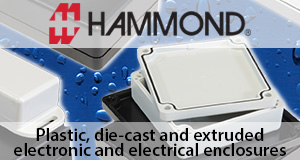Think about the current applications of Bluetooth in our daily life and then envision a world that is even more connected. The Bluetooth Special Interest Group estimates that annual shipments of Bluetooth-enabled devices will exceed 7 billion in 2026. As innovative engineers, you have the opportunity to help meet the market demand for more integration of Bluetooth in medical devices, toys, personal electronics, smart home devices and more.
Bluetooth trends in medical
Bluetooth functionality is expanding in more medical applications than ever, including blood glucose monitors, medical sensor patches and even smart toothbrushes. For designers, the challenges involved with implementing such products include accommodating consumer demand for these features:
- Small, noninvasive size and shape- No one wants a glucose monitor or a temperature patch that is restrictive or difficult to use.
- Long battery life- Because consumers need to use some of these devices at critical times, a long battery life helps preserve peace of mind.
- Strong performance- Similar to the need for long battery life, it’s important to provide a reliable connection.
Bluetooth trends in personal electronics
Although personal electronics such as gaming accessories, toys or remote controls are quite different from lifesaving medical devices, the feature requirements when it comes to integrating Bluetooth are similar, and include:
- Sleek and functional designs- Consumers prefer modern-looking products, whether that’s a wireless keyboard or a mouse.
- Extended battery life- Maintaining consistent operation on a single charge.
- Low cost- Offering products at a price point that won’t break the bank.
Helping you meet the trends
Until now, engineers implementing Bluetooth have faced certain trade-offs, such as sacrificing RF performance and quality due to cost limitations.
TI’s SimpleLink portfolio, which includes CC2340 wireless microcontrollers (MCUs), can help address those design challenges in medical and personal electronics applications:
- Up to 512KB of flash memory and 36KB RAM provide flexible configurations for extended feature support.
- Its small form factor (4-mm-by-4-mm or 5-mm-by-5-mm packages) and integrated balun help make it possible to design into space-constrained applications.
- The MCU’s low power reset/shutdown current of <150 nA and <830 nA of standby current help maximize battery life.
- Pricing starting at $0.79 helps designers implement high-quality Bluetooth into more low-cost products.
Beyond the examples I’ve given in this article, TI designed its Bluetooth Low Energy wireless MCUs to meet evolving needs across many other sectors, such as building automation, lighting and retail automation. The CC2340 family has a mix of features and price points to fit into a wide range of Bluetooth Low Energy applications to help you with your goal of creating a more connected world.















